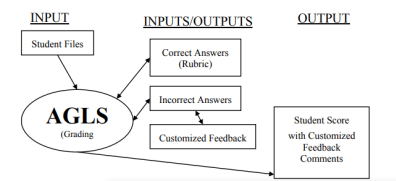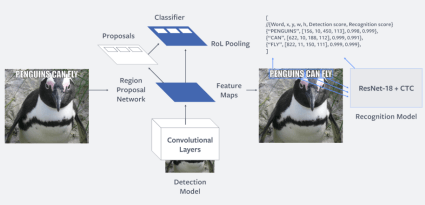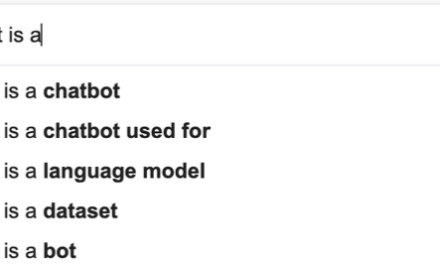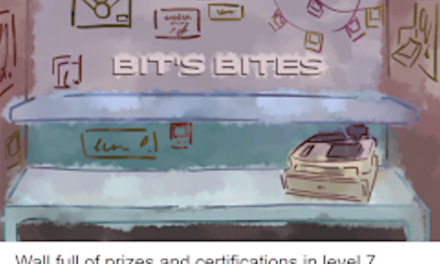Supervised by: Sanjan Das. Sanjan is a final year Engineering student at the University of Cambridge. Over his degree, he has specialised in Bioengineering and Information Engineering. He is set to begin an MS in Artificial Intelligence and Innovation at Carnegie Mellon University, U.S.A later this year.
Abstract
Technology is becoming an increasingly important sector, and has been integrated into almost every aspect of everyday life. With this increased awareness of the field, it is natural that advanced concepts such as AI receive more focus and are developed further. AI has many practical applications, not least of which is in education. Many companies have developed software which makes use of the benefits of AI, allowing them to create more efficient and personalized programs. The wide variety of purposes and functions of educational AI systems has resulted in a plethora of methods and implementations that combine to create a finished product. One aspect of AI is an automated grading system.
Automated grading systems are beneficial to a wide variety of users, whether they be students or teachers. This paper explores how auto grading has evolved and how it functions, in particular focusing on the specific aspect of text reading software that is necessary to understand the input of a user. While text reading software is not specific to educational AI systems, it is a critical part of auto grading and a requirement for any system to work.
1. What is Automated Grading?
Automated grading is a system designed to help teachers or institutions assess more effectively and quickly. Automated sorting with paper sorting is the new solution to simplify the sorting process for numerous tasks. This process is a method of assigning a grade to an assignment submitted by a student. In addition, it helps all types of students to understand the quality of the work presented.
Automated grading is an impartial assessment that makes the correction process fairer. Besides that, by using various concepts from established learning theories, the goal and this process is to improve the quantity, quality, and speed of feedback.
2. Evolution of Automated Grading
The implementation of automated grading has undergone many significant steps throughout its development. Although the idea started out simple and basic, today’s version of auto grading is quicker and more efficient than ever, and is becoming increasingly popular in educational software.
The first methods of automated classification were dated in 1970. However, until 1990, there were not many advances, as only in recent years have improvements been made in the technology that allows the evaluation of language, grammar, plagiarism, and other important aspects.
In 1999, the Educational Testing Service used automatic classification for the first time for the GMAT (Graduate Management Admission Test). Over the years, the methods of auto grading have evolved and, as a result, the automated classification methods have done the same. With such sophisticated resources, more efficient evaluation methods were created, and through using AI it is now possible to develop better ways to identify patterns making these auto grading more effective.
Senior Director of Research David Williamson says that because this is a “hot” topic, there are many researchers working on it and we can expect many advances in the near future [1].
In today’s COVID-ridden world, automated grading has become more relevant than ever. Most schools have moved to online learning and teaching at a distance, causing them to turn to software to help make the process easier. Many of these programs feature methods of automated grading, as it provides numerous benefits to users, whether they are students or administrators.
3. Benefits of Automated Grading
As mentioned previously, implementing automated grading in various educational programs has several benefits for both teachers and students.
3.1 Student Benefits
- They do not need human checking: With automatic evaluation systems it is possible for the student to check the answer to a question in a matter of minutes, so they will have greater efficiency when it comes to revising or studying a topic independently.
- Fast evolution: Using the automatic assessment, the student will visualize their errors and, by identifying them, it will be possible to correct them. As the automatic correction process is fast, the time that the student would otherwise waste waiting for a professional’s evaluation, they may spend more effectively.
3.2 Teacher and Institution Benefits
- Use of time: With a large number of students, there are a large number of tasks the teacher must juggle. As a result of automated classification, the time that would be spent on tests, essays and assignments can be spent in the classroom.
- Reliable result: mass classification of tasks in a short period of time is possible due to the AI classification, these scores are accurate for every human being.
- It is easier for the teacher to identify where students are going wrong: With the help of an effective assessment system it is simpler for a teacher to identify the strengths and weaknesses of each student. With this visualization they can ensure their teaching focuses on the most difficult points to the students.
- Easier ranking: With an automated grading system, it is possible to get a ranking quickly, saving hours of work.
4. Technical Aspects
Nowadays, there are several AI software in development, working in different ways. Some mark multiple choice quizzes instantly, while others are capable of critiquing nuanced essays or correcting difficult mathematical equations.
4.1 Automated Grading for Essays
Essay correction software works with a database, with which it is possible to make grammatical corrections based on the data that have been implemented in the system. For example, if a student writes the phrase “you is smart” in their essay, the database will notice that the formulation is different from the information in its system, so it will show the student the correct way to write that sentence. Systems of this type are very common and there are several companies that work in this area, such as Grammarly, LanguageTool, Linguee and others.
Furthermore, the software can continue learning from the available data. The teacher-evaluated works provide data that initiates a learning process; this software learns to replicate the classification process used by humans to correct essays [4]. Incoming learning combined with AI provides the ability to automatically grade essays.
Dr. Vincent Ng, researcher and professor of computer science at University of Texas at Dallas is developing long-form essay software; the researcher says the goal is to completely eliminate the need for human graders altogether [5].
In his research, the teacher attacks a problem that can be solved with an evaluation system. The problem is that each person evaluates subjectively, which ends up disturbing and confusing the students. A UT Dallas student says they felt a lack of objectivity in their former university’s assessments: “I sometimes felt like there was injustice, like maybe the grade depended on the mood of the grader” he says. “A robot would put a standard on the grading system.”
Most AI systems are modeled on the human brain. Ng said it’s critical to teach the AI software how to grade by giving examples (in this case, human-rated trials). However, unfortunately, these examples can propagate errors. Therefore, the dataset must be objective and error-free.
4.2 Automated Grading for Exact Areas
Research carried out by educators shows the operation of an automated grading system known as AGLS (Adaptive Grading/Learning System). The system created is based on results, unlike other systems. This software evaluates the actual answers that students provide, not the process or mouse clicks required to achieve those answers.
Each answer made will be sorted right or wrong according to two lists, which can be a limiting factor. “For example, in an Excel spreadsheet, a student may multiply cells C6 and C7 together by using =C6 * C7 or using =C7 * C6; both are correct. A list of incorrect responses is also coupled with appropriate feedback for the student.” [3].

Figure 1: Input/output diagram for adaptive grading process of the AGLS
In addition to this system, there are many others. In math, a great example of automated grading is the “Mathway” app, it solves math equations from the easiest to the most difficult. Solving the equations occurs in parts, for example, using a lexer the system divides the expression into tokens, in an expression like 2+2, the tokens are “2” “+” and “2”. These tokens are fed into a parser, which knows the context and relationships between all the tokens, and can call the appropriate functions.
For example, when the parser encounters the 2+2 expression, it sees the “+” token and looks up in the table, it should call a function named “add” with the tokens “2” and “2” as arguments, which does the math and returns a 4.
These and other systems are very useful for students to self-correct their answers, so they won’t need someone else whenever they want to correct their equations.
5. Understanding Text in Images with AI
Reading text images is a function possible thanks to AI, and today it is used by different types of companies, from the healthcare sector to the automotive industries. Extracting text from images is a technique that uses artificial intelligence to read text in images without any human interference. For the reading of text in images to be performed, the image goes through some processes, the first of which is optical character recognition. The OCR (optical character recognition) despite having good results, is still considered a challenge for companies in this segment. Basically, what OCR does is recognize letters in images, then it turns them into words, then those words become sentences that become text. Some OCR softwares differ but, according to an article written by Arthur Haponik for the addepto site, most take into account some factors when reading a text in an image, the first factor is the density of the text, depending on the image the software will have to read texts with different densities, from book pages to plates, even with the possible difficulties that the system may face it must be able to recognize both. Another factor is the structure and font of the text, the text on a page is often well-structured which makes it easy for the system to recognize what is written, however, in some cases the phrases and words can be all spread across the page, with different fonts and size, which makes reading the text more difficult [2].
5.1 Rosetta
Rosetta, a system created by Facebook for reading text in images, is very useful for the platform. Rosetta extracts text from billions of images and videos daily, and the amazing thing is that, unlike other systems, it is able to recognize text and understand the connection it has with the image [6].
Text extraction is performed in stages, the first being detection and the second being recognition. In the first step, the system recognizes what the text possibly is, in the second, in each of the recognized regions, a convolutional neural network is used to transcribe each word in each region.

Figure 2: Rosetta’s process for reading text in images
The recognition model used by Rosetta is based on ResNet18 (a type of convolutional neural network that is 18 layers deep), which is quite efficient. In system training, a sequence prediction problem is introduced, in which the input is the image that contains the text to be recognized, and the output is the sequence of characters that form the word of the image. This training method allows the system to recognize words that are outside your vocabulary. Facebook made two changes to the ResNet18 architecture, which allowed them to preserve the spatial location of the characters.
The Rosetta system is already used by several Facebook and Instagram products. It functions as a resource in several upstream machine learning models, such as improving the quality of photo search. The system is extremely useful to identify images that violate the platforms’ hate-speech policies.
5.2 Extracting Text from Images to Help the Visually Impaired
A challenge faced worldwide is how to teach the visually impaired more effectively. Nowadays, there are several technologies that help in this. Systems that read text from images are very important because they make daily life much easier for people with vision problems.
The TTSREADER site, for example, recognizes text in images, documents or even ebooks and then reads them aloud, technologies like this make it much easier to educate people with visual impairments.
6. Conclusion
In conclusion, this research paper shows how important automated grading is in today’s world; it also presented the functioning of AI systems that read text from images. Automatic assessment is one of the futures of AI in education, it has several benefits, which is why schools, institutions and teachers need to implement it, saving hours of unnecessary work. However, even with the automated grading’s quality, there are still points that can be improved, which is why there are several researchers working to find ways to improve the quality and safety of automated evaluation systems.
Bibliography
[1] Caralee J. Adams. “Essay-Grading Software Seen as Time-Saving Tool. (English)”. In: edweek (2014). doi: https://www.edweek.org/teaching-learning/essay-grading software-seen-as-time-saving-tool/2014/03.
[2] Arthur Haponik. “Text Extraction From Images Using Machine Learning. (English)”. In: addepto (2021). doi: https://addepto.com/text- extraction- from- images using-machine-learning/.
[3] Ling He Kevin Matthews Thomas Janicki and Laurie Patterson. “Implementation of an Automated Grading System with an Adaptive Learning Component to Affect Student Feedback and Response Time. (English)”. In: Journal of Information Systems Educa tion, Vol. 23 (). doi: https://jise.org/Volume23/n1/JISEv23n1p71.pdf.
[4] Anmol Kumar. “AI’s New Role In Education: Automated Grading. (English)”. In: elearningindustry (2020). doi: https://elearningindustry.com/artificial-intelligence new-role-in-education-automated-paper-grading.
[5] Dr. Vincent Ng. “Dr. Vincent Ng Develops AI Essay Grading Program. (English)”. In: utdallas (2018). doi: https://cs.utdallas.edu/dr- vincent- ng- develops- ai essay-grading-program/.
[6] Albert Gordo Viswanath Sivakumar and Manohar Paluri. “Rosetta: Understanding text in images and videos with machine learning. (English)”. In: Facebook (2018). doi: https://engineering.fb.com/2018/09/11/ai-research/rosetta-understanding text-in-images-and-videos-with-machine-learning/.




